#StoneAge
Photo

Woolly Mammoth
The woolly mammoth, Mammuthus primigenius, is an extinct herbivore related to elephants who trudged across the steppe-tundras of Eurasia and North America from around 300,000 years ago until their numbers seriously dropped from around 11,000 years ago. A few last stragglers survived into the Holocene on island refuges off the coast of Siberia and Alaska. One of these - Wrangel Island - harboured the last known group of mammoths until around 3,700 years ago.
Continue reading...
131 notes
·
View notes
Photo
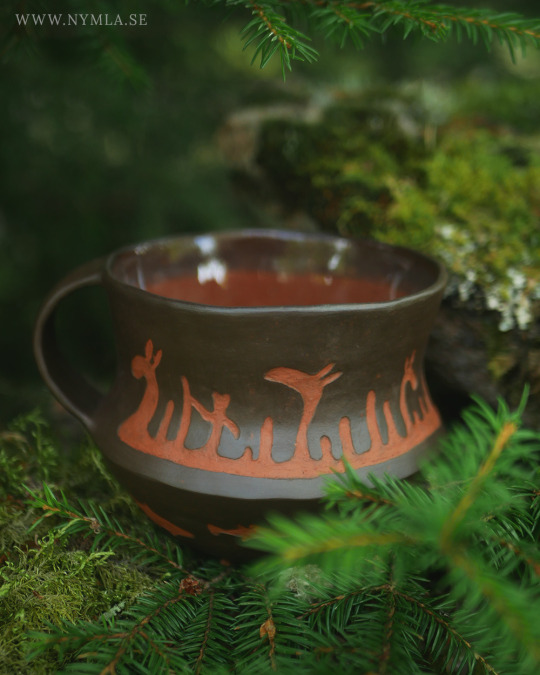
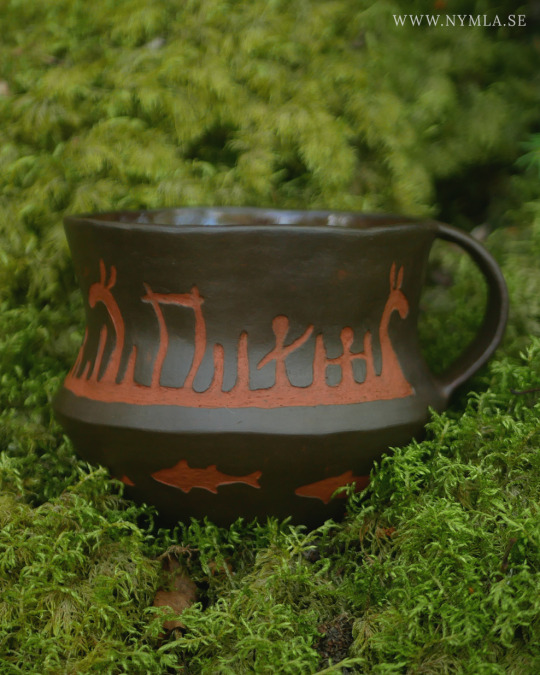
A weirdo moose-ship rockcarving mug! Quite inspired by the stoneage petroglyphs at Nämforsen (Sweden).
This one is sold but I'm working on some new petro-mugs now actually.
If you want to be notified of my shop updates, here's a link to my email list :)
208 notes
·
View notes
Text
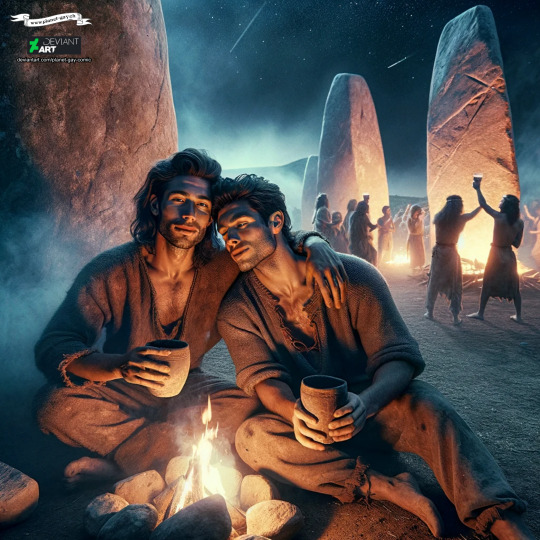
From the Winter Solstice to New Year's Celebration: A Journey Through Time
Introduction:
The winter solstice marks not only the shortest day of the year but also one of humanity's oldest traditions. Deeply rooted in the Neolithic era, this astronomical phenomenon has been a central event in our ancestors' calendars for thousands of years. But how has this ancient festival evolved over millennia into our modern holidays like Christmas and New Year's?
Origins in the Neolithic Era:
During the time when people became settled and the first agricultural societies emerged, the winter solstice played a crucial role. Understanding the path of the sun and the changing seasons was essential for planting and harvesting crops. Monumental stone temples, such as Göbekli Tepe, served not only as spiritual centers but also as early calendars, allowing early agrarian societies to measure time and plan their agricultural activities. Besides Göbekli Tepe, there are other ancient sites worldwide that could have served as calendrical or astronomical observatories. Some examples include Stonehenge in England and the ancient stone circles in Nabta Playa, Egypt. These sites often contain alignments and markings pointing to significant solstices, equinoxes, or other astronomical events.
Beer and Wheat as Drivers of Civilization:
Interestingly, it was the increasing demand for beer and wheat that led to the first organized division of labor and, ultimately, the emergence of the first cities. The winter solstice was not only a time of gratitude for the past harvest but also a reason to celebrate. Brewing and sharing beer became a social event that strengthened the community and fostered cultural exchange.
The Changing Millennia:
With the rise of different high cultures and religions, customs surrounding the winter solstice transformed. The Romans celebrated the Saturnalia, a festival in honor of the god Saturn, with gifts and feasts. Later in history, Christianity adopted many of these pagan customs and symbolically placed the birth of Jesus near December 25, close to the solstice.
From Solstice to New Year's Eve:
The transition to the modern New Year's Eve celebration, as we know it, has its roots in Julius Caesar's Roman calendar reform. The start of the new year was fixed on January 1, a day dedicated to Janus, the god of doors and gateways symbolizing new beginnings. This day was marked with anticipation of a happy new year and celebrations that continue to this day.
Conclusion:
The winter solstice and New Year's festivities mirror human history, shaped by astronomical cycles, agricultural achievements, and the relentless human quest for community and meaning. While today we welcome the new year with fireworks and festive gatherings, we are still connected to the traditions of our ancestors who came together on the longest nights of the year to celebrate light, life, and hope for a fruitful future.
Closing Words:
May this New Year's Eve be a moment for all of us to appreciate the deep history we share and to look into the coming year with hope and joy. Happy New Year!
26 notes
·
View notes
Text

Come to the stone age side.
It's cool and fine. No politics, no religion, no bills, no fire weapons, no cars, no sugar, no pants and no bra...
#motu#heman#mastersoftheuniverse#grayskull#masters#barbarian#eternia#teela#joke#stoneage#caveman#prehistory#jungle
8 notes
·
View notes
Photo

A 6,000-year-old baby with its teeth still intact and resting in the right arm of a woman, believed to be its mother, has been found in a grave in Nieuwegein in the province of Utrecht, Netherlands 2018
The bone fragments that were discovered at the site included a tiny jaw with several milk teeth, which helped scientists to conclude that the baby most probably had died when it was several months old. The mother was around 25-30 years old. However, DNA comparisons still have to show whether it is actually mother and child and what sex the little one was.
16 notes
·
View notes
Photo

You deserve a community of loving, understanding and supportive people. Grow and let grow. Follow @bnw.inspirations for more...🤍 . . . . . #bnwphotography #blackandwhitephotography #bnw_greatshots #bnw_captures #bnw_waterdrama #architecture #architecturephotography #bnw_of_our_world #hamburg #maritime #community #bnwsouls #noiretblanc #noiretblancphoto #travelnoire #travelphotography #stoneage #motivation #friday #simplephotography #inspiration #love #photoeffect #photohobby #stilllifephoto #photographerlovers #photographerofinstagram https://www.instagram.com/p/CqLvlMXsxlr/?igshid=NGJjMDIxMWI=
#bnwphotography#blackandwhitephotography#bnw_greatshots#bnw_captures#bnw_waterdrama#architecture#architecturephotography#bnw_of_our_world#hamburg#maritime#community#bnwsouls#noiretblanc#noiretblancphoto#travelnoire#travelphotography#stoneage#motivation#friday#simplephotography#inspiration#love#photoeffect#photohobby#stilllifephoto#photographerlovers#photographerofinstagram
2 notes
·
View notes
Text
Neolithic ✨️

If you would like to buy this wallpaper you can do so for as little as £0.50. You can also find 3 different versions of it on my redbubble.
It's also available free to all my Patrons, along with the process (and all future wallpapers).
#art#artist#pixel art#pixel artist#pixelart#pixel#stone circle#pixel scenery#pixel illustration#neolithic#stoneage#history#historical#archaeology#trees#pastel#magic#pastel colours#faerie#fairycore#fairy aesthetic#fairy#naturecore#nature#landscape art#landscape#wallpaper#my art#artists on tumblr#support small artists
2 notes
·
View notes
Text
Stone age man who lived 31,000 years ago turned out to be a woman
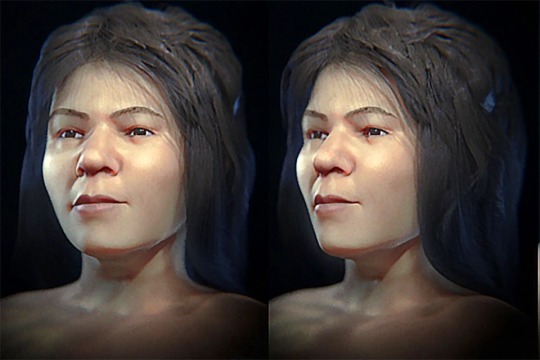
Brazilian and Czech researchers made an unexpected discovery by restoring a portrait of a man whose remains were discovered in 1881 during excavations in the Czech Infant Caves - they were inhabited by prehistoric people.
Paleontologists found a skull, which was decided it belonged to an adult man due to the scarcity of methods of scientific analysis of the century before last. The find was transferred to the Vienna Historical Museum (Naturhistorisches Museum Wien) and for almost 140 years, no one doubted the conclusions, until modern science undertook to restore the portrait of this “man”.
They restored it with the help of specialized computer programs and the man "changed sex" - turned out to be a woman, or rather, a young girl. Diverse studies have made it possible to determine that she lived 31 thousand years ago - in the Stone Age. Scientists call these times the Upper Paleolithic. She died at the age of 17. Either she got sick or she died but she was nevertheless buried.
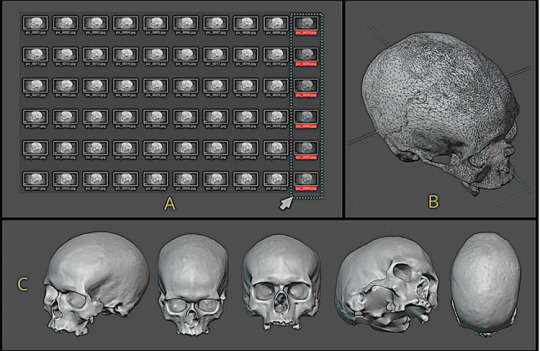
The found skull was scanned from different angles. Photo: cambridge.org
The face turned out to be cute even by modern standards - it was not embarassing to walk with such a girl in front of the tribesmen to the neighboring cave.
The authors of the reconstruction, which was led by Cicero Moraes, a Brazilian expert in the processing of graphic data, slightly embellished the final “result”.
After all, the skull was without a lower jaw, and the girl was reconstructed by a modern face - the most suitable in shape. The original face could have not been so perfect, with more or bigger curves.
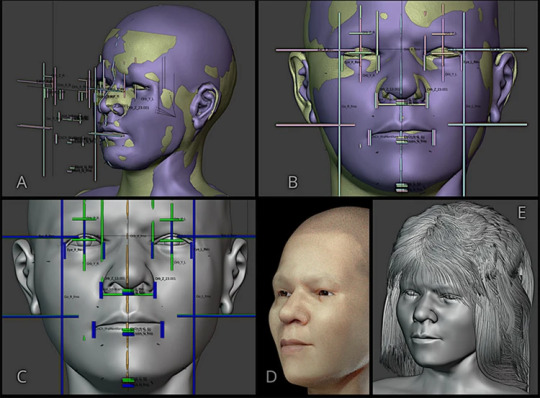
Stages of reconstruction. Photo: cambridge.org
However, researchers dispelled the myth that Stone Age women were all ugly.
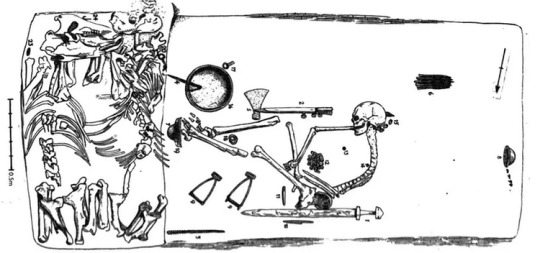
Viking mound. Photo: cambridge.org

The Viking turned out to be a woman, albeit a tall one. Photo: cambridge.org
This is not the first time that archeological and paleontological finds have been “sex changed”. A similar incident happened in Sweden. In 2017, they unearthed the grave of a Viking - a rather tall and noble warrior in full armor, lying nearby with two war horses. They decided that it was a man but subsequent genetic analysis showed that the remains belong to a woman - a female warrior. This was recognized in 2019.
Read the full article
3 notes
·
View notes
Photo
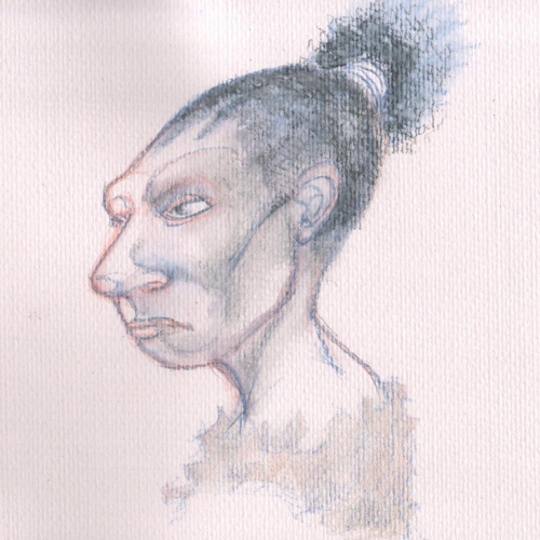
Young Neanderthal woman #neanderthal #woman #cavewoman #paleo #paleolithic #paleontology #anthropology #iceage #sketch #drawing #art #pencildrawing #history #huntergatherer #artwork #instaart #instaartist #stoneage https://www.instagram.com/p/BTKQw8njRUM/?igshid=NGJjMDIxMWI=
#neanderthal#woman#cavewoman#paleo#paleolithic#paleontology#anthropology#iceage#sketch#drawing#art#pencildrawing#history#huntergatherer#artwork#instaart#instaartist#stoneage
4 notes
·
View notes
Text
Wildlife and Minor Pet Hunting by spherefish


This is a pure scripting mod that adds a “Hunt!” interaction to all deer, raccoons and minor pets (birds, snakes, rodents, etc.) in the game. Sims will walk to the critter and try to “hunt” it. If the hunt is successful, a random amount of meat (usually steak, see below for other drops) will be added to their inventory. Depending on their traits they might react to the hunt in different ways. These reactions can be positive or very negative, a detailed list on which traits trigger which specific reaction is provided below.
Version 1.2 also adds a “Hunt and Gather...” Terrain interaction that makes your sims hunt multiple pets of the selected type in a row. This interaction will show up for sims child or above when you click on any Terrain that is located outside.
Mod The Sims - Wildlife and Minor Pet Hunting
2 notes
·
View notes
Text
What’s the matter with you, USA?!
3 notes
·
View notes
Photo
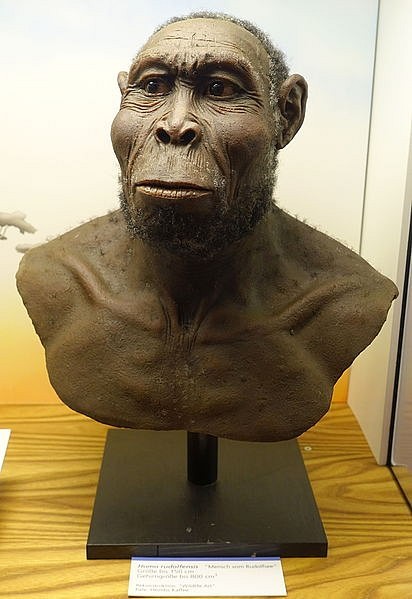
Homo Rudolfensis
Homo rudolfensis is an early human species that lived in East Africa between c. 2.5 and 1.8 million years ago. It is known from a handful of skull, jaw and teeth fragments that remind alternatingly of Homo or of Australopithecus and that piece together to reveal a relatively large-brained, flat-faced species with robust teeth capable of chewing through tough plants.
Continue reading...
70 notes
·
View notes
Photo
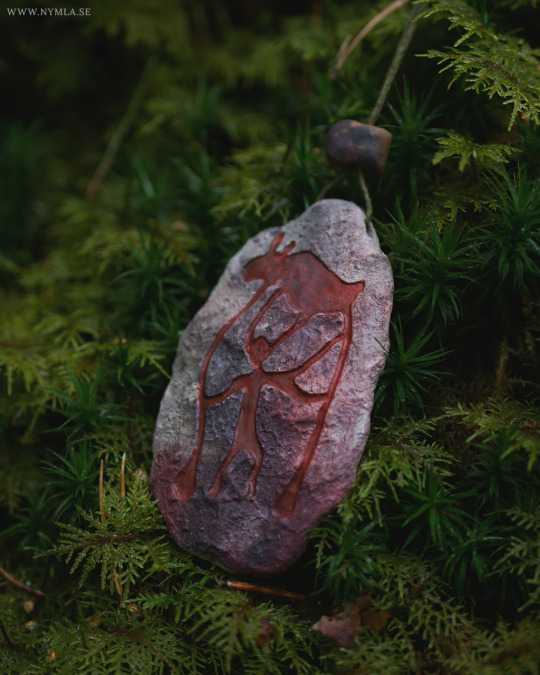

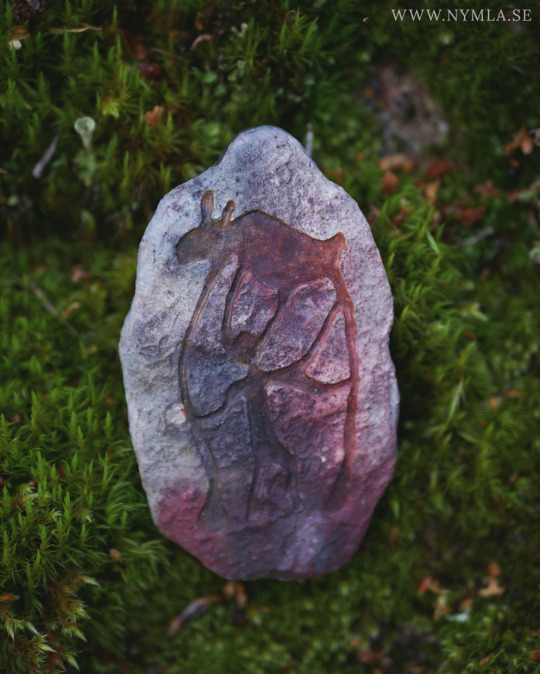
Before and after pitfiring these ceramic pendants! [These are sold.]
First pic is after firing and after I filled in the figure with some extra red paint. Second pic is before firing. Third pic is after firing (and not filled in with paint yet).
This figure is based on a stonecarving/petroglyph I saw in Näsåker, Sweden. Mysterious figure and a moose! What do you think is going on there, what does it depict?
#Petroglyphs#hällristning#ceramics#pitfiring#primitive pottery#stonecarving#pagan#pagan art#stoneage#ancient
21 notes
·
View notes
Video
youtube
Exploring Ancient History Discovering the 100,000-Year-Old Java People S...
0 notes
Text

Friday: Day for a good barbecue..
#motu#heman#mastersoftheuniverse#grayskull#masters#barbarian#eternia#shera#teela#barbecue#wine#beer#jungle#stoneage
6 notes
·
View notes
Text
youtube
#youtube#japanese#japan#history#japaneseculture#culture#prehistory#stoneage#paleolithic#paleolithicjapan#japanesehistory
1 note
·
View note